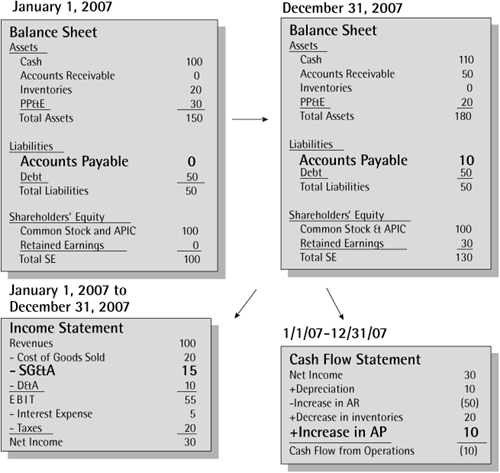Accounts Payable and the Lemonade Stand
Let’s assume that you purchased $15 of office supplies during 2006, $5 of which you bought for cash and the rest on credit. During the year, you recorded selling, general, and administrative (SG&A) expenses of $15 on the income statement (all office supplies were used up as part of the lemonade stand operations). However, you spent only $5 in cash to purchase those office supplies.
Since the company’s accounts payable increased by $10 during 2006, we know that it had a positive cash flow impact. Accordingly, increase in accounts payable of $10 during the year must be added back to net income (Exhibit 7.11) on the cash flow statement in order to accurately depict the amount of cash generated by the company’s operations.
Exhibit 7.11. Increase in Accounts Payable Has a Positive Cash Impact and Must Be Added Back to Net Income to Arrive at Cash Generated by Operating Activities

Bottom LineWhen accounts payable increase, the cash impact is positive. Conversely, when accounts payable decrease, the cash impact is negative. |
Get Crash Course in Accounting and Financial Statement Analysis, Second Edition now with the O’Reilly learning platform.
O’Reilly members experience books, live events, courses curated by job role, and more from O’Reilly and nearly 200 top publishers.

